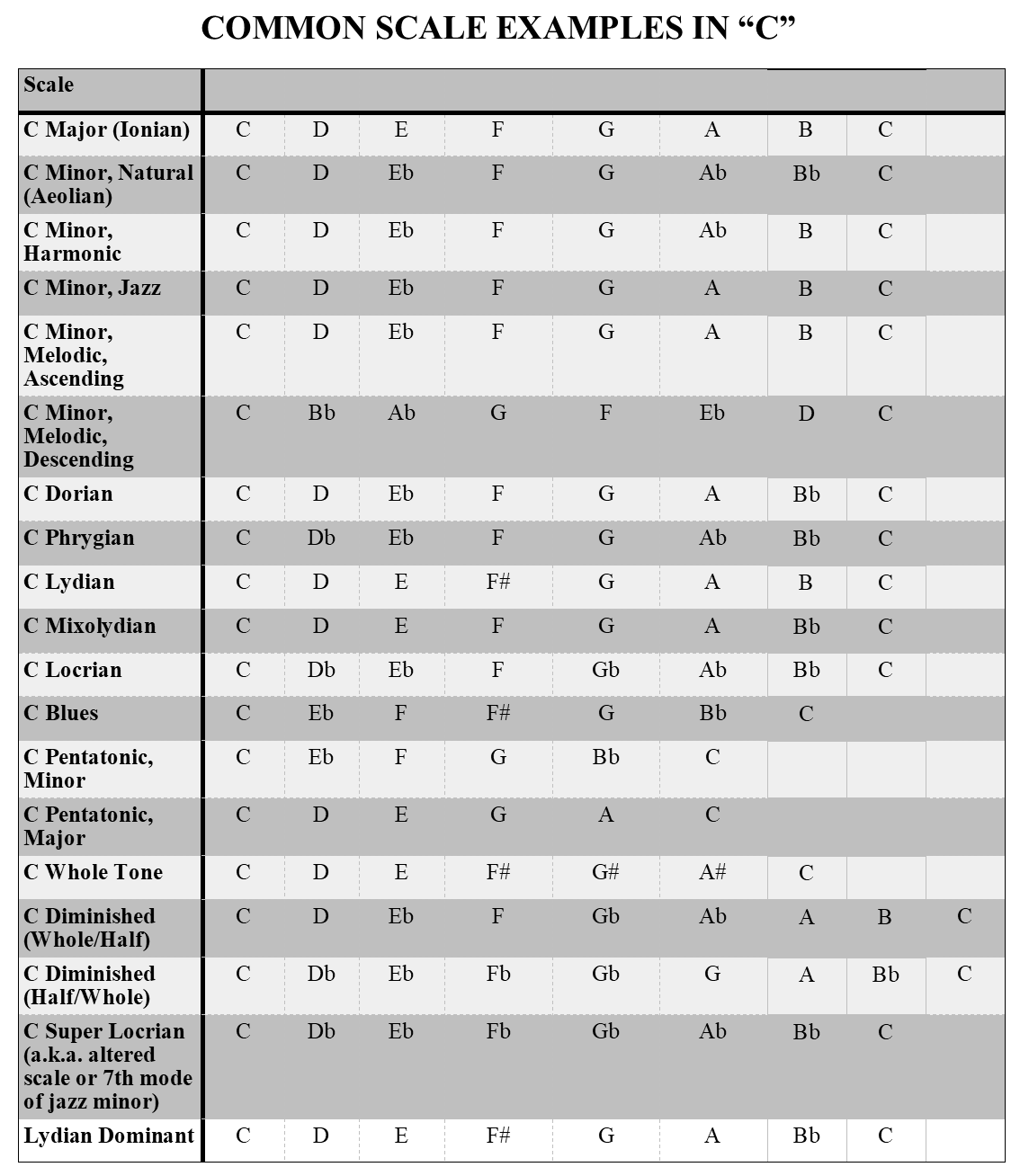Scale Formulas
The chart below will give you a way to construct the most-common scales without knowing much about music theory. If you know what a whole and half-step are, you're set. Here's how it works:
- Pick a starting pitch.
- Find the second note by going up the number of half-steps indicated to the left.
- Continue adding notes in this way until you complete the formula by moving progressively to the right.
Here's an example. Let's say you want to construct a G major scale.
- G will be the first note, the tonic.
- The first number on the left for the major scale formula is 2. Go up two half-steps from G. This is A and the second note in the scale.
- At this point the scale is G followed by A.
- The next number to the right is 2. Go up two half-steps from A. This is B and the third note in the scale.
- Continuing this process until reaching the end of the row will result in the G major scale.
G 2 A 2 B 1 C 2 D 2 E 2 F# 1 G
Scales with seven numbers will be spelled in strict alphabetic order. Doing so will result in the correct spelling of sharps, flats, double-sharps, and/or double-flats. Scales with more or less than seven numbers will present some spelling difficulties, the answers to which are beyond the scope of this webpage. However, if you spell the scale wrong it will still sound the same, but music theorists will cast their eyes aside. ;-)
I have included the scales in C below to use as a guide.


